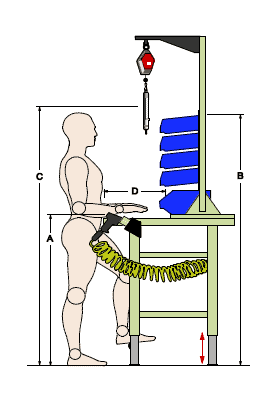Automation equipment design projects are inherently complex and often require consideration of several parameters such as structural integrity, ergonomics, Poka-Yoke, safety, and flexibility to meet the stringent requirements of performance and accuracy.
APA Engineering uses 7 principles for automation engineers to ensure better design. All our automation design projects, without exception, follow these 7 principles.
#1:Safety
Every automation assembly line, automation equipment, work cell, workstation, the fixture is designed to meet safety guidelines provided by the customer in line with regulations with such as OSHA, OHSAS, etc.
Some safety measures include guarding with light curtains, rod lock cylinders, safety cylinders, laser area scanner, e–stop switch, etc.
#2:POKA YOKE
We incorporate preventive and detective poka–yoke system in all automation equipment design. The preventive poka-yoke is incorporated by using different design features such as different hole sizes and patterns, adding extra material at the appropriate places, etc.,
We incorporate detective poka-yoke by using proximity, capacitive, laser sensors, machine vision cameras, etc.,
This helps the machine builder to assemble components in the right place without errors.
#3:Design for Quick Changeover
We design versatile fixtures to accommodate both LH and RH components to support quick changeover.
We also design the fixtures of the automation line to quickly changeover across variants by incorporating the design elements such as quick knobs (quarter-turn clamps) and locating pins.
#4:Design for Manufacturing
We follow the Design for Manufacturing (DFM) principles for all our customers. Adjustments such as Push–Pull block (shim packs), Locating pins, part nests, etc., are provided wherever the machine builder cannot exactly assemble them in their positions. This reduces the complexity of the assembly process.
#5:Design for durability
Wherever soft materials such as Plastic, Delrin, Nylon, Aluminum, etc., are used, we avoid creating tapped holes. Instead, we use thread inserts.
Machine structures are validated with Finite Element Analysis to determine and ensure stresses and deflections are well within the allowable limits.
Any stopper part, possible wearing parts and locating pins should be made of hardened material.
#6:Selection of Standard equipment
During the initial stage of design completion itself, we perform sizing calculation to select every standard equipment/component such as pneumatic cylinders, clamps, Linear guides, etc., These calculations are vetted by the respective manufacturer. The customer can place the order upfront to speed up the construction schedule
#7:Ergonomics
We design all the workstations as per industry/customer specific ergonomic standards such as working height for the standing operator, picking distance from the operator position, maximum vertical reach, etc.,

If you would like to know more about this topic.